Saturday, November 22, 2003
Silvered Æ antoninianus, Göbl MIR 36, 1638a
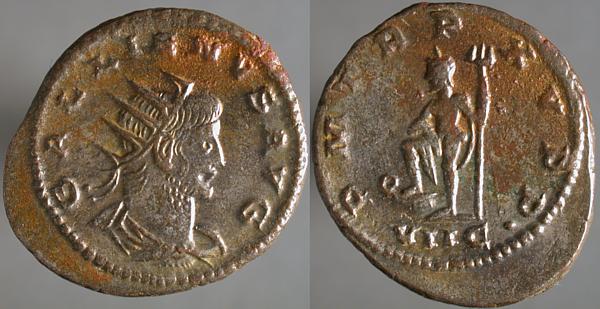
Antoninianus featuring Neptune, GALLIENVS AVG, Radiate draped bust right / P M TR P XV P P, Neptune standing left, holding trident right, foot on prow left. VIIC· in exergue.
Neptune was not frequently seen on Imperial Roman coins. Gallienus and Claudius Gothicus both issued such coins, though. The reverse legend names Gallienus Tribunicia Potestate for the 15th time, and the exergue marking VIIC· is interpreted as naming him Consul for the 7th time, offices that he held for the year beginning September 266.
Friday, November 21, 2003
Æ23 Cotiaeum in Phrygia, Gallienus, SNG Cop 342
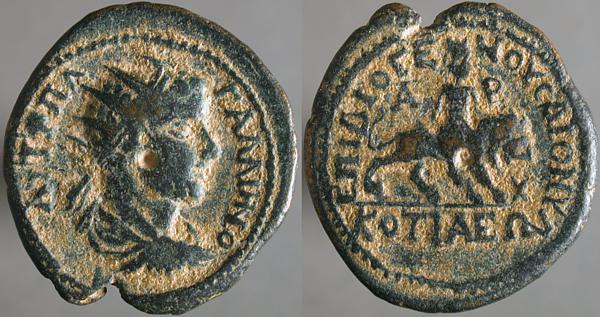
Æ23, ΑVΤ Κ Π Λ ΓΑΛΛΙΗΝΟ, Radiate draped bust right / ΕΠΙ ΔΙΟΓΕ_ΝΟΥC ΔΙΟΝΥ / ΚΟΤΙΑΕΩΝ, Kybele riding lion right. Α_Ρ / X in fields.
The reverse honors Diogenes Dionysos as Archon of the city, which seems to be all we know about this mellifluously-named fellow.
Presumably he was not a priest of Kybele (the goddess shown on lionback) which was a career not to be undertaken lightly.
Thursday, November 20, 2003
Æ denarius, Göbl MIR 36, 599bb
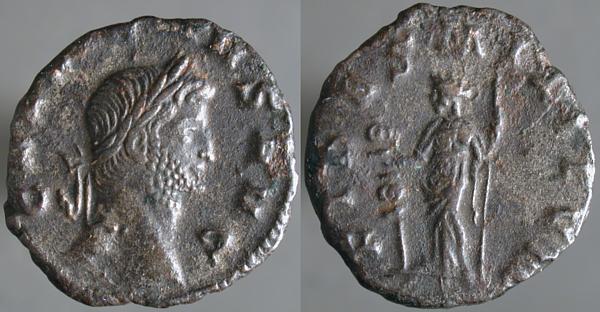
Denarius, GALLIENVS AVG, Laureate head right / FIDES MILITVM, Fides standing facing, head left, holding standard left and spear right.
Yesterday's coin was a republican silver denarius, c. 169-157 BCE, this bronze denarius of Gallienus was coined over 400 years later. By now although the denarius was uncommon and largely superceded by the antoninianus, they continued to be minted in small quantities through at least the time of Aurelian (270-275 CE.)
Wednesday, November 19, 2003
AR denarius, Furia Purpureo, c. 169-157 BCE, Sear (Millenium) 75, RSC Furia 13
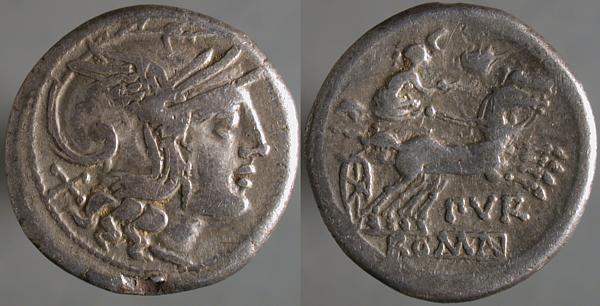
Head of Roma right, X behind / Luna in biga right, holding reins (no goad), crescent moon above head, murex shell above horses. PVR below horses, ROMA in linear frame in exergue.
The denarius was first issued as a silver coin c. 211 BCE, originally valued at 10 sesterces, it's often said to be a day's pay for a skilled manual laborer, or a legionary soldier in times of peace.
Originally a good silver coin of significant value, used in daily commerce, by the third century CE it became no more than a small bronze coin used mostly, I think, in public shows of generosity. An example tomorrow.
Tuesday, November 18, 2003
Æ21 Alexandria Troas, Valerian II, unpublished?
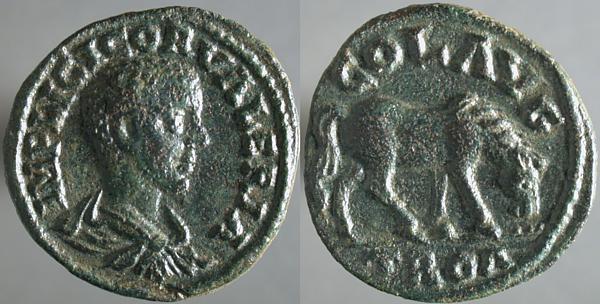
Æ21 IMP LICI COR VALERIA, Bare-headed draped bust (of Valerian II) right / COL AVG TROA, Horse grazing right.
Alexandria Troas often featured horses on their coins. While this reverse, of a horse grazing, is common, I've found no reference to its appearance on a coin naming Valerian II, son of Gallienus.
It's both a drawback and an advantage that there is no definitive book of provincial coinage. There are some catalogs of extensive collections, but as no collector could ever amass examples of even most of the provincial coins, they can't be more than a help. It does mean that individual collectors, even without an unlimited budget, can find coins with significance not realized by those who've previously handled them.
Monday, November 17, 2003
Silvered Æ antoninianus, Göbl MIR 36, 1619fT22
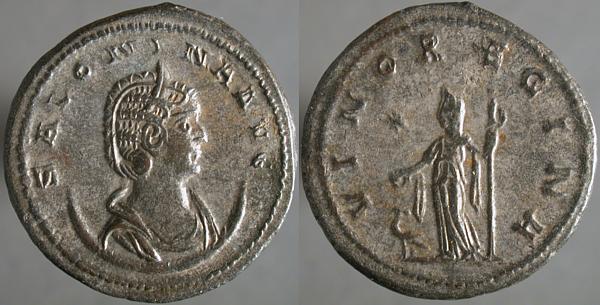
Error in reverse legend. SALONINA AVG, Diademed draped bust right on crescent / VINO REGINA, Juno standing facing, head left, holding scepter right and patera left. Peacock at feet left. Star in left field.
Correct examples of this coin from the mint of Antioch have the reverse legend IVNO REGINA. Blundered legends aren't especially rare on ancient coins (Göbl shows a similar coin from Rome with neither peacock nor star, but with the same misspelled reverse legend,) but this one is especially amusing. Even with the evidence of double-striking apparent in the legends on both sides, this is the nicest one I've seen.
Sunday, November 16, 2003
Æ15, Ephesus in Ionia, SNG Cop 531
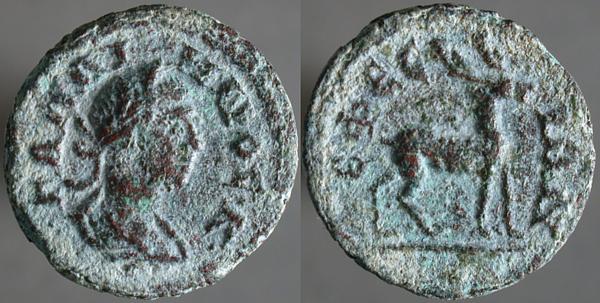
15mm bronze. ·ΓΑΛΛΙ_ΗΝΟC·Κ·, Laureate draped bust right / ΕΦΕC_ΙΩΝ, Stag standing right.
Many of the coins of Ephesus feature Artemis, often in a hunting scene. Ephesus was home to a huge temple of Artemis, of which ruins still survive. This small coin hasn't room for anything so complex, but keeps to the theme by showing a stag, the animal that Artemis is usually shown hunting. It makes an interesting provincial companion to the Zoo Collection imperial coins.

